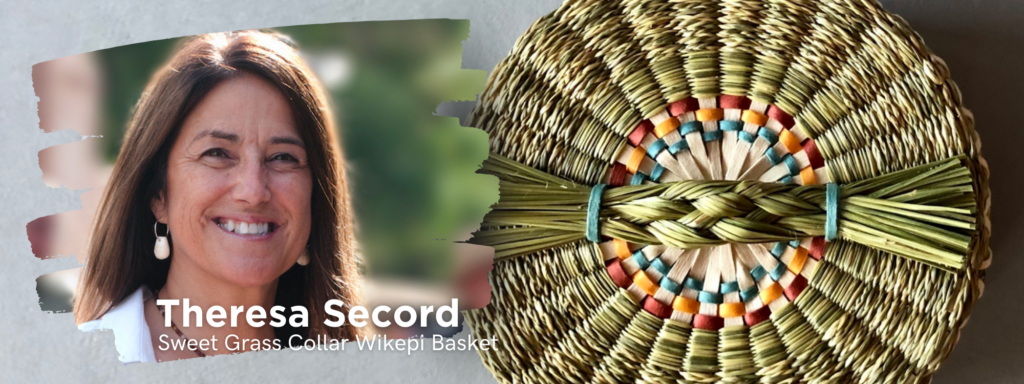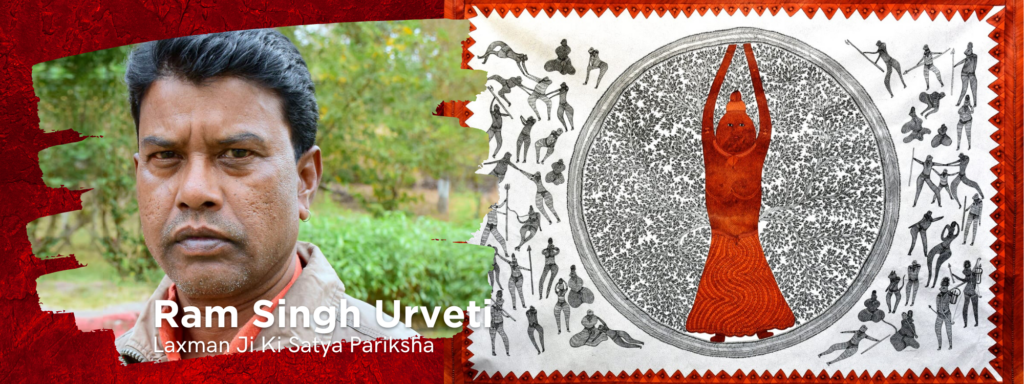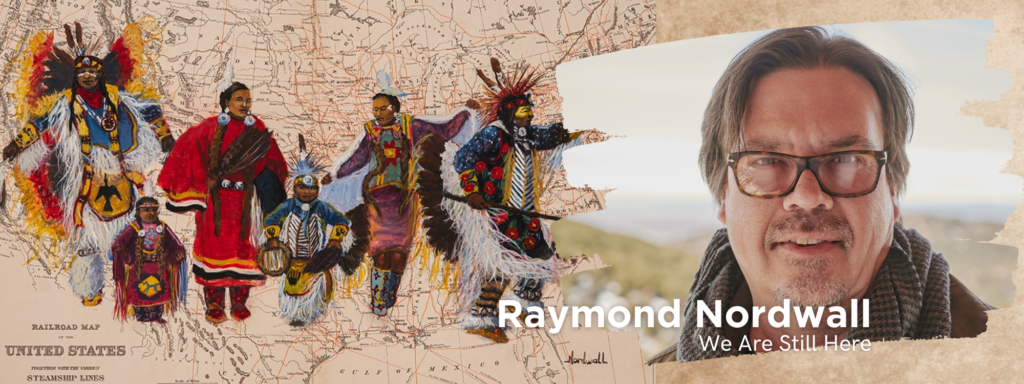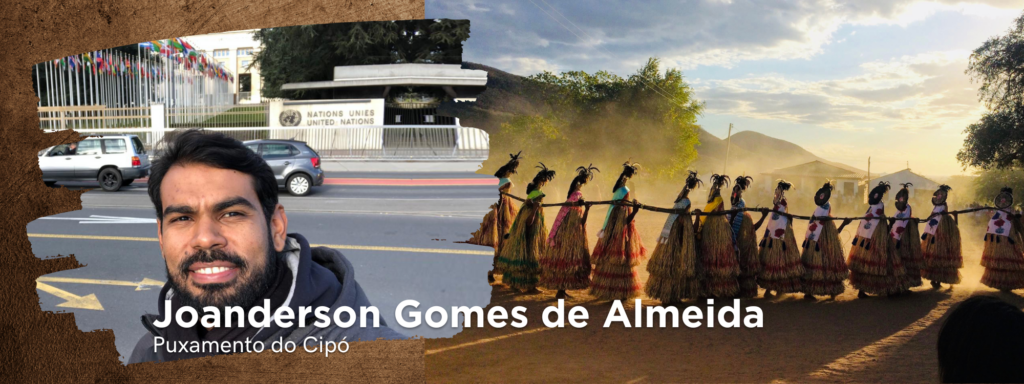About the Artists
In determining the imagery to accompany articles in this special edition, we realized that many images “available” for use are of questionable provenance. To address this, we licensed for the use of the images contained in this special edition directly with respective Indigenous creators, compensating them with a royalty, a proper mechanism for compensation for the use of these images. We hope you will enjoy these beautiful creations and take the time to learn more about the individual artists featured.
Our sincere thanks to these talented artists:

Read about Theresa in Supporting Tradition-Based Entrepreneuship with Intellectual Property: WIPO’s Community Entrepreneurship and browse her Wikepi Baskets.

Terran Last Gun/ Saakwaynaamah’kaa (b. 1989, Browning Montana) is a Piikani (Blackfeet) citizen and visual artist. Last Gun’s work centers around the process of color exploration and visual documentation of nature, cosmos, cultural narratives, and recollections of home. Often employing geometric aesthetics, he is contributing to an ancient Indigenous North American narrative through various media that include ledger drawing, printmaking, painting, and photography.
Last Gun received his BFA in Museum Studies and AFA in Studio Arts from the Institute of American Indian Arts in 2016. He is the recipient of awards from the First Peoples Fun, 2020 Artist in Business Leadership Fellowship, and the Santa Fe Institute, 2018 Story Maps Fellowship. Most recently, he was named one of the 2022 12 New Mexico Artists to Know Now in Southwest Contemporary (formerly THE Magazine). He currently lives and works in Santa Fe, New Mexico. He currently lives and works in Santa Fe, New Mexico.

Ram is a tribal artist who studied painting under the late Shri Jangarh Singh Shyam and attended the Model School. Ram’s work has been shown in solo and collective exhibitions at prestigious shows primarily in India, but also internationally. He has also served as a judge in a number of competitions and has given talks on his works. Ram has also participated in Artists Camps throughout the country. His artwork has received numerous national and international awards including the Gond painting displayed here which, along with some of his other works have appeared as illustrations in books some of which Ram is credited as a co-author.

Raymond Nordwall was born in Muskogee, Oklahoma in 1965. He is Pawnee, Cherokee, and Ojibwe. Raymond studied art with artists Johnny Tiger Jr., Dick West, Adam Fortunate Eagle, and Frank Howell. He attended Oklahoma State University, Bacone College, and the Institute of American Indian Arts.
Raymond began showing his artwork in galleries at the age of twelve. While he was young, he emulated the Oklahoma “traditional” style of painting. After moving to Santa Fe, New Mexico, he studied the European masters’ work which greatly impacted a new approach to his painting style. His style has also been influenced by impressionism, cubism, Japanese woodblock prints, Chinese masters and pop art. He has worked with several different painting mediums including oil, acrylic, mixed media, monotypes (an oil based printing process), watercolor, and etchings.
Raymond and his wife, Gina have owned the Nordwall Gallery & Studio for 24 years, located on Santa Fe’s historic Canyon Road. He will also be doing a limited edition print of 50 of “We Are Still Here” represented here in this special edition.
“I’ve discovered that working in different mediums allows my process to evolve, grow and change. Each medium requires a different approach and focus which expands creativity and technique. Through my artwork, I want to inspire people to learn more about the Native American cultures and their appreciation of life and nature. When I’m in a beautiful place, I can’t help but think about the Creator, and I’m grateful for what He has given to us”.

Joanderson Gomes de Almeida is indigenous to the Pankararu people of Pernambuco, Brazil. He is 30 years old, has a master’s degree in law from the University of Brasília, and is the winner of the WIPO Photography Prize for Indigenous Peoples and Young People from Local Communities, see below.
Joanderson remembers the exact moment he took the winning photo. He likes to photograph the Pankararu traditions to keep these special moments with him. Joanderson’s friends recommended that he enter the photo contest, because they believed in him and in the potential that photos have to expand the world’s understanding and appreciation of the tradition.
The winning photo, called “Puxamento do Cipó” or “Vine Pulling”, takes place in a traditional festival, called “Flechamento do umbu”. The Flechamento do umbu” is the festivity that precedes the traditional “Corrida do umbu” of the Pankararu indigenous people. The festival occurs once a year right when the first mature umbu is found. The tradition begins with the Praiá traditional dance and soon afterwards there is a moment called Puxamanto do Cipó, with the pulling the vine that is similar to a tug of war. On one side the liana (cipó) is pulled towards the east (east side) and on the other side the liana (cipó) is pulled towards the west (west side). And there is a meaning to the result – if the liana (cipó) goes to the east, it means that the year will be one of good harvests, plenty, abundance, and good rains. If the liana (cipó) goes to the west, it means that the year will not be productive.
As Joanderson learned, the liana (cipó) gives a preview of what the weather forecast for the year will be like, as it works as a kind of oracle. This tradition is another thing that draws attention to the resilience of the Pankararu people, because many people say that if you go one way it’s good and if you go the other way it’s good too, because it’s God’s will. For Joanderson it’s a kind of game, in which the result will always be a win for all.
The Pankararu indigenous community is located in the interior of the state of Pernambuco, a conservation community that maintains its traditions. Yet it is a community punished by the lack of rain, with a very severe drought period, due to climate change. Additionally, despite the proximity of the São Francisco River, less than 10km, the community is not supplied by the waters of the São Francisco River, and this is a concern to the community.
Learn more about the WIPO Photography Prize for Indigenous Peoples and Community Youth 2021-2022.
This contest was a great opportunity to reveal new talents from Indigenous peoples and local communities, including as Joanderson’s photo represents, the importance of highlighting the vision of these peoples in this awakening to climate change. This contest also served to raise awareness on how copyright can be used to protect artists’ creativity expressed through photographs.
Among the hundreds of applications, a total of 30 photos entered the final stage of the competition. An independent panel of judges constituted by four international Indigenous and local community photographers selected three winners for the awards to be delivered during an event at WIPO to celebrate International Mother Earth Day.
THE BRAND PROTECTION PROFESSIONAL | DECEMBER 2022 | VOLUME 7 NUMBER 4
2022 COPYRIGHT MICHIGAN STATE UNIVERSITY BOARD OF TRUSTEES
- Next…
